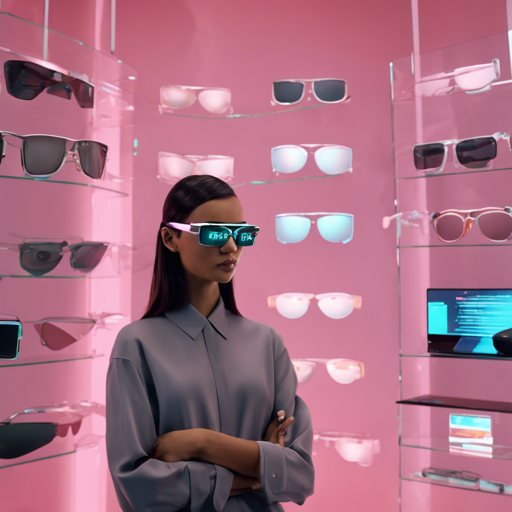Welcome to the world of artificial intelligence where fashion meets technology! In this blog, we will explore how to create a virtual try-on experience using the Flux LoRA model with a focus on the trendy Ray-Ban Meta Smart Glasses. This guide will help you understand the process, parameters, and settings necessary for this innovative project. Let’s dive in!
A Step-by-Step Guide
- Step 1: Set Up Your Environment
Ensure that you have the necessary components for your training, including:
- NVIDIA RTX 4090 (24GB VRAM)
- The appropriate version of Flux and LoRA integrated into your environment.
- Step 2: Data Collection
Gather images of the Ray-Ban Meta Smart Glasses that you wish to use. An ideal dataset should comprise various angles, settings, and styles, as shown in the descriptions below:
- A woman wearing Ray-Ban Meta Smart Glasses against a navy blue background.
- A casual image of a woman enjoying coffee in a cafe, also sporting the glasses.
- A DJ showcasing vibrant nightlife vibes, complete with smoke and laser lights.
- Adventurous settings, like a surfer at the beach or skiers in snowy mountains.
- Step 3: Configure Your Training Parameters
To set up your training job effectively, consider the following:
- Training steps: 2000
- Learning Rate: 2e-4
- Batch size: 1 (for this project)
- Gradient checkpointing: true
- Step 4: Training the Model
Fire up your training! This phase is akin to teaching a child a new skill. Just as you would provide encouragement and feedback, your training algorithm learns from the dataset and adjusts to recreate styles effectively. We use various prompts as guidance during this learning process, such as:
- “Ray-Ban Meta Smart Glasses, close-up photograph, woman looking up.”
- “A man showing off his cool new t-shirt at the beach, wearing Ray-Ban Meta Smart Glasses.”
- Step 5: Testing and Iteration
After training, the model will synthesize images based on the learned parameters. Review the outputs closely and don’t hesitate to retrain if the results aren’t as expected!
Troubleshooting Common Issues
While the training process is straightforward, you may encounter a few stumbling blocks along the way. Here are some troubleshooting tips:
- Low-Quality Outputs: Ensure your dataset is rich and diverse. Consider augmenting your images or including more variations in lighting and backgrounds.
- Training Process Stops Early: Check your environment set-up; ensure that there’s sufficient RAM and that GPU resources are fully utilized.
- Model Overfitting: If your model is performing too well on training data but poorly on unseen data, consider increasing your training dataset or applying dropout techniques during training.
For more insights, updates, or to collaborate on AI development projects, stay connected with fxis.ai.
At fxis.ai, we believe that such advancements are crucial for the future of AI, as they enable more comprehensive and effective solutions. Our team is continually exploring new methodologies to push the envelope in artificial intelligence, ensuring that our clients benefit from the latest technological innovations.
Conclusion
That’s a wrap on our guide to training a fashion virtual try-on model using Ray-Ban Meta Smart Glasses and Flux LoRA! With a step-by-step approach and some troubleshooting tips, you’ll be able to create stunning visual experiences that blend fashion and technology beautifully. Happy training!

